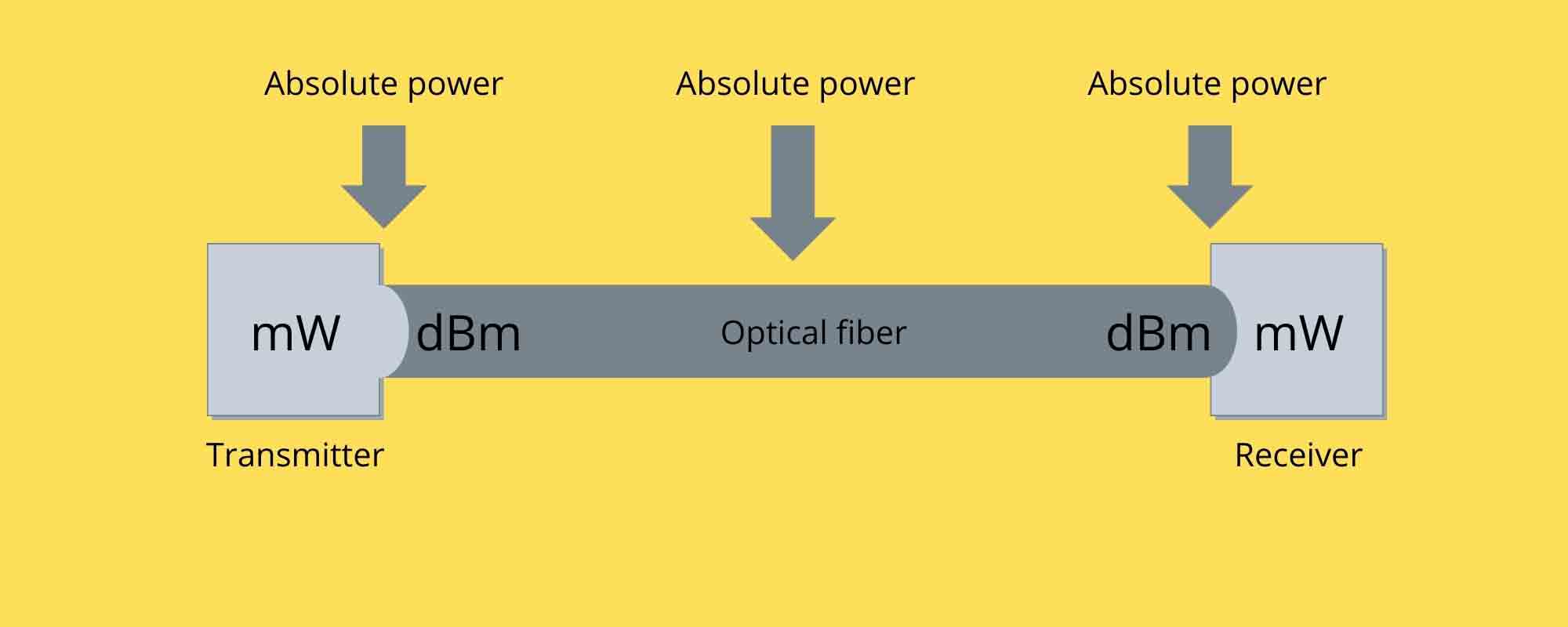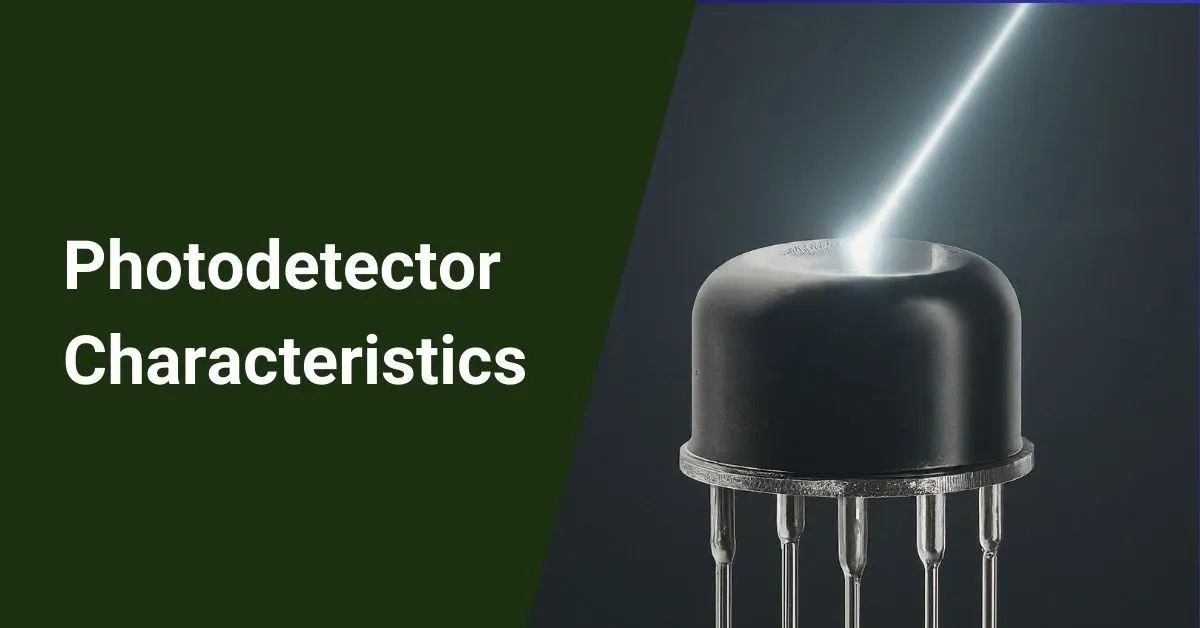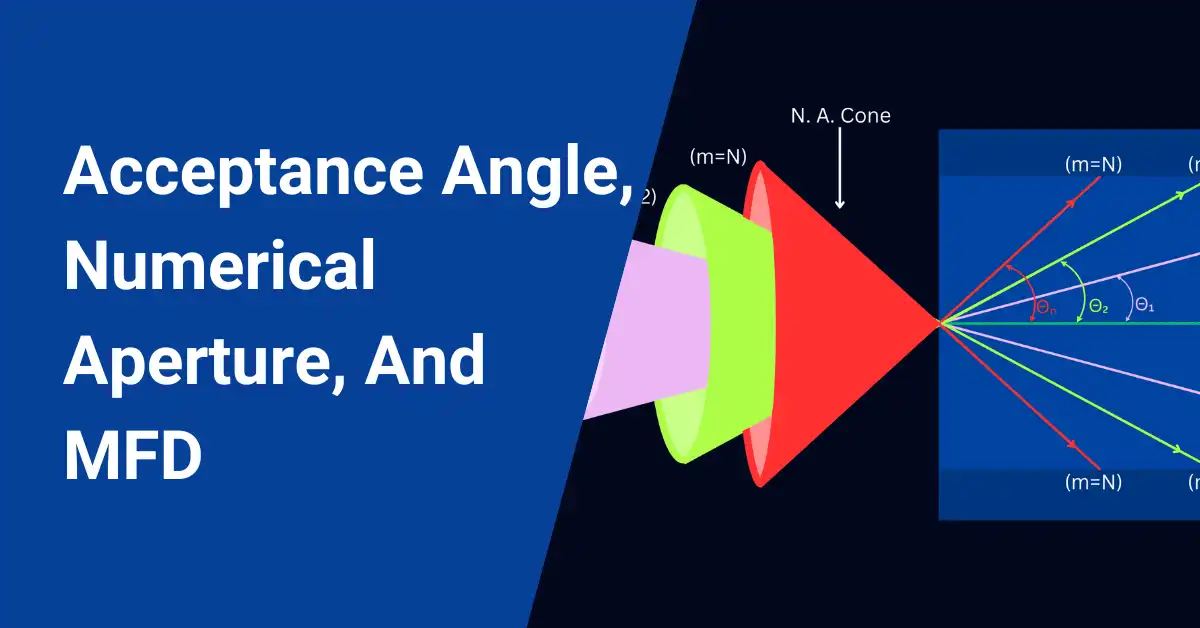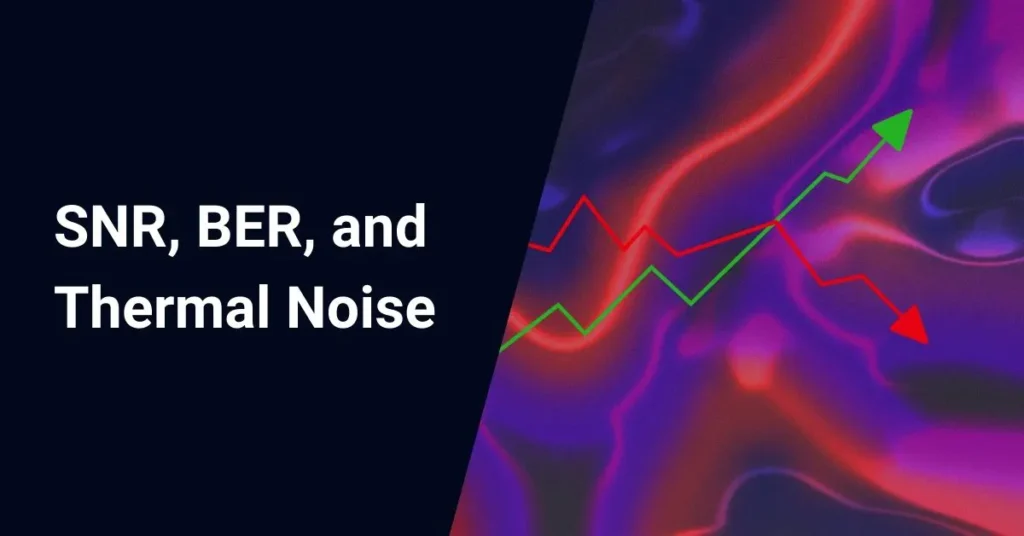The Optical power in optical fibers refers to the strength of the light signal transmitted through the fiber optic cable. It is measured in dBm, with 0 dBm equaling 1 milliwatt.
Optical power is vital for transmitting signals, measuring power, maintaining signal integrity, and providing immunity to EMI/RFI. A power meter can be used to measure optical power, which helps determine the signal strength at the transmitter and receiver ends.
However, scattering, absorption, and other factors can reduce the power, leading to signal loss and errors. Therefore, using the right amount of optical power for a specific application is crucial to maintaining signal integrity without overloading the receiver and causing errors.
Generally, power is measured in Watts (W), which are equivalent to Joules per second (1W = 1 J/s). Optical powers are divided into two categories, particularly in the context of fiber optic communications:
- Absolute power
- Relative power
Table of Contents
Absolute power
As shown below, absolute power is the optical power referred to as 1mW that is used to measure absolute optical power coming from transmitters, receivers, or at any specific point of optical fiber. The measurement unit of optical power is “dBm.”

In terms of absolute power, the power level P is expressed as a logarithmic ratio of P with reference to 1mW. The power, in this instance, is an absolute value denoted by:
\(Power\ level\ in\ dBm=10\ \log_{10}(\frac{p_{mW}}{1_{mW}})\)
Relative power
Relative power, which is used to calculate the optical loss between any two points in an optical network, is the optical power referenced at a random zero level. As you’ll see below, it does not reflect the absolute power level. The relative power of optical fiber is measured in units of “dB.”

Where Po and Pi are optical power levels of a signal in mW. The dB unit is defined by:
\(Power\ loss\ in\ dB=10\ \log_{10}(\frac{p_o}{p_i})\)
Where Po and Pi are optical power levels of a signal in dBm. The dB unit is defined by:
\(Power\ loss\ in\ dB=P_{o\ }-P_{i}\)
Calculate dBm to mW using our converter
Optical transceiver and switch specifications include their output and input optical powers. In most cases, the optical power will be below 0 dBm. The least optical power that a receiver can detect is referred to as its sensitivity.
Here are some instances of electrical power levels measured in mW and their related optical power levels measured in dBm.
| Electrical Power | Optical Power |
|---|---|
| 1000 mW | 30 dBm |
| 500 mW | 27 dBm |
| 200 mW | 23 dBm |
| 100 mW | 20 dBm |
| 50 mW | 17 dBm |
| 20 mW | 13 dBm |
| 10 mW | 10 dBm |
| 1 mW | 0 dBm |
| 0.1 mW | -10 dBm |
| 0.01 mW | -20 dBm |
| 0.001 mW | -30 dBm |
| 0.0001 mW | -40 dBm |
| 0.00001 mW | -50 dBm |
| 0.000001 mW | -60 dBm |
| 0.0000001 mW | -70 dBm |
| 0.00000001 mW | -80 dBm |
| 0.000000001 mW | -90 dBm |
0 dBm = 1 mW is a key relationship to remember while working with optical fiber. Since negative values are less than 1 mW, positive values of dBm are larger than 1 mW.
What are the uses of Optical power in optical fibers?
Optical power is a crucial aspect of fiber optic transmission and has many uses. Here are the top 4 uses of optical power in optical fibers:
Transmitting power
Optical power allows fibers to transfer electricity using photovoltaic conversion. This unique capability enables power transmission without metallic conductors.
- Copper wires can interfere with sensitive equipment like MRI machines. Fiber optics avoid this problem, permitting power transfer in restrictive settings.
Power over fiber
Power over fiber (PoF) is a technology in which a fiber optic cable carries optical power as an energy source. This allows a device to be remotely powered while providing electrical isolation between the device and the power supply. PoF is useful in applications where it is important to avoid electromagnetic fields created by electricity flowing through copper wire.
This exciting innovation sends power remotely through fiber cables.
- Devices connect to powered fiber links instead of wall outlets.
- The fiber optic connection electrically isolates powered equipment.
- Eliminating conductive power cables removes electromagnetic interference.
Various applications benefit from power over fiber:
- Sensors in hazardous locations
- Cameras and panic buttons
- WiFi access points
Measuring power
Optical power is measured using a power meter, which determines the strength of the light signal at the transmitter and receiver ends. This measurement is used for loss calculations and determining the power from a source or receiver.
- Transmitter power indicates how much light enters the cable.
- Receiver power verifies adequate intensity to reach the destination.
- Comparing transmitted vs received power calculates cable loss.
This data aids fiber optic engineering:
- Validate cable connections and splices
- Detect unexpected losses from damage
- Size optics for link requirements
Maintaining signal integrity
Optical power maintains the signal’s integrity as it travels through the fiber optic cable. Loss of optical power due to scattering, absorption, and other factors can reduce the signal strength and cause errors. Therefore, using the appropriate amount of power to maintain signal integrity without overloading the receiver and causing errors is important.
Sufficient optical power maintains data integrity inside fibers. But excessive power causes errors too.
- Light scatters off cable impurities as it travels.
- Absorption by fiber material also reduces intensity.
- Given enough distance, loss degrades signals.
- Low power provokes bit errors, interrupting transmission.
Careful power budgeting ensures high signal quality:
- Transmit enough light to overcome worst-case loss
- Include extra margin to account for aging
- Don’t overload sensitive receivers
In summary, optical power has various applications in fiber optic transmission, including transmitting power, power over fiber, measuring power, and maintaining signal integrity. These uses highlight the importance of optical power in ensuring reliable and efficient transmission of information through fiber optic cables.
Conclusion
We examined optical power and its importance in fiber optic communication. Optical power is the light strength transmitted through cables, impacting signal transmission, measurement, and preservation. Loss from scattering and absorption necessitates judicious powering to avoid overload while sustaining integrity.
Key applications centered on powering through transmission, remote energizing, and gauging intensity at sent and received termini. Maintenance of signal depended on sufficient optical levels curbing diminishment.
Overall, diligent power handling via enriched manufacturing and recycling mitigated environmental effects while technical preplanning localized installation impacts. When skillfully executed, optical networks interconnected continents with lessened cost to settings traversed.
FAQ
What is normal optical power?
An optical power meter can measure the typical range of optical power from about 0 dBm (1 mW) to about -50 dBm (10 mW). However, some specially adapted units may measure higher or lower power levels. Above 0 dBm is considered “high power,” and below -50 dBm is considered “low power.”
How much optical power is good for WIFI?
Optical Module Input Power level below -27 dBm may cause intermittent issues, and an optimal level may be below -25 dBm. It is important to note that the optimal optical power level for a WiFi connection may vary depending on the specific system and equipment used.
Is optical better than wifi?
Optical fiber is better for high-speed, long-distance connections that require high reliability and large bandwidth, while WiFi is more suitable for everyday use cases that require flexibility and convenience.
What does 1 dB loss mean?
If a signal has an initial power of 1 milliwatt (0 dBm) and it experiences a 1 dB loss, its power would decrease to approximately 0.794 milliwatts (-1 dBm). If it experiences a 3 dB loss, its power will decrease to approximately 0.5 milliwatts (-3 dBm), and so on.
What is the difference between dB and dBm in fiber optics?
dB (decibel) is a unit that describes the ratio between two power levels, such as the amount of attenuation or gain in a signal. It is a logarithmic unit that expresses the power level as a ratio of the power of the reference level. dBm (decibel-milliwatt) is a unit used to express an absolute power level, referencing 1 milliwatt (mW). It is used to measure the actual power of an optical signal rather than the ratio of power levels.










